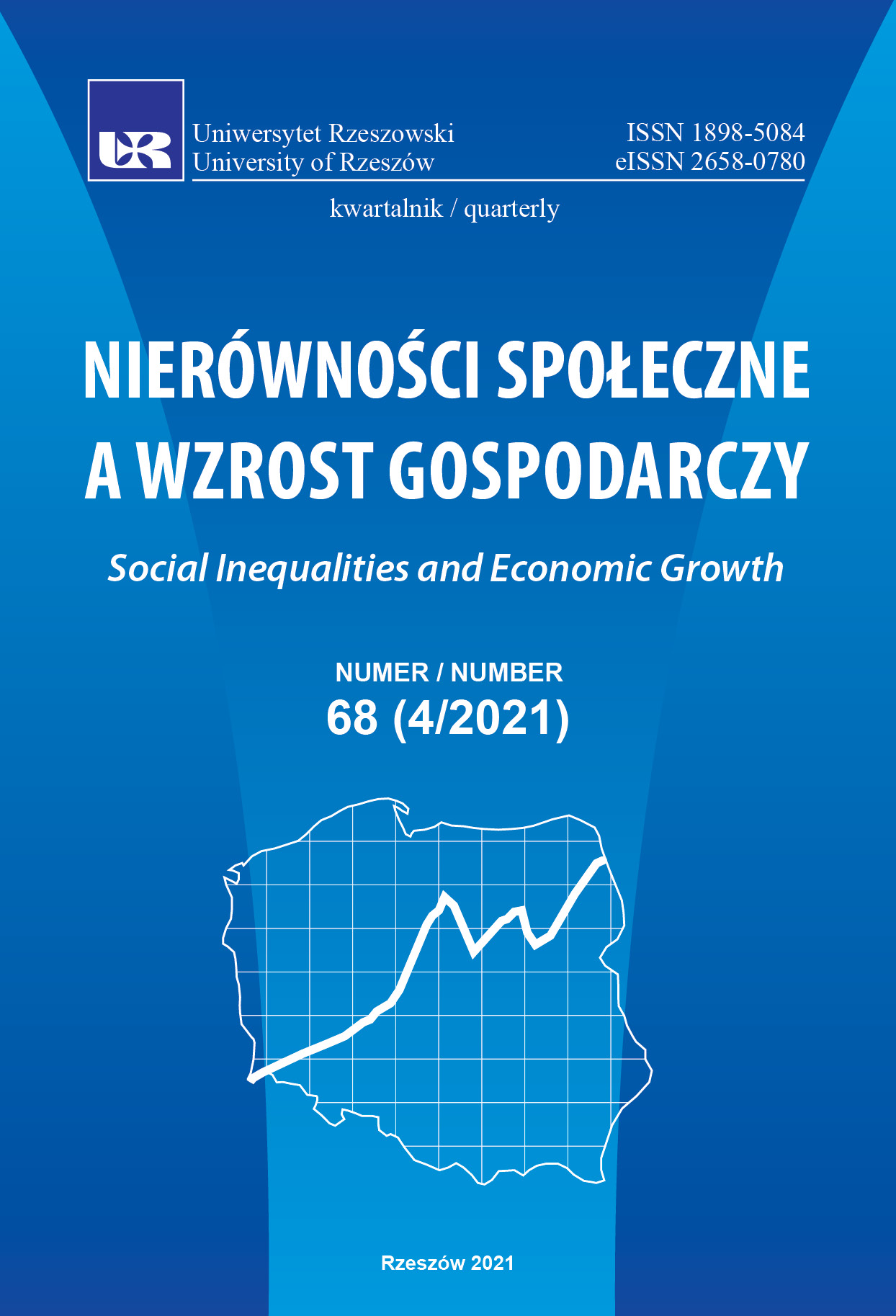The project for the new socio-economic development of the II Republic of Poland – Central Industrial Region (COP)
DOI:
https://doi.org/10.15584/nsawg.2021.4.7Keywords:
The II Republic of Poland, state interventionism, Central Industrial Region, socio-economic activity, co-operativesAbstract
This paper focuses our attention on the plan for the Central Industrial Region (COP) for the economic and social activity of the undeveloped rural South-East regions of the II Republic of Poland, it was extremely innovative for its time. COP was initialized with joint industrial development, urbanization and the establishment of many new enterprises of military industry, which have brought about improved chances for a better life and civilized progress for the inhabitants of the region. It was a good example of a planned economy, and served to strengthen the state, alleviating poverty and social conflicts, presenting chances for the aspirations of citizens. It integrated various partners: state and local administration, state and private enterprises, co-operatives. The role of the cooperatives (mainly consumer, agricultural trade, housing, banking) in this plan, are less well[1]known, but nevertheless it is worth noting the many good examples demonstrated by these units. The paper is based on a historical analysis of the literature, scientific workshops and contemporary co-operative journalism. COP was a good example of the policy of state interventionism. The realization of this project was interrupted during the Second World War. The Nazi occupiers used the industrial base to achieve their military goals. Even in these circumstances, the co-operative’s network was developed, serving the everyday needs of Polish society and forming a basis for a Resistance Movement. The project had a precursory character, thereby allowing sufficient scope for the development of the social economy (today known as the social market economy), acting to preserve the various needs of the environment, what is specified today as its goals. After the war, industrial development was continued in the form of a socialist centrally planned economy, in the new area of the People’s Republic of Poland.
Downloads
References
Chyra-Rolicz, Z. (2007). Społemowcy w historycznym COP. Kurier Spółdzielczy, 4(1929), 3.
Gołębiowski, J. (2000). Centralny Okręg Przemysłowy. Dzieje industrializacji w rejonie bezpieczeństwa 1922–1939. Kraków: Wydawnictwo Naukowe Akademii Pedagogicznej.
Inglot, S. (red.). (1971). Zarys historii polskiego ruchu spółdzielczego, cz. I do 1918 r. Warszawa: Zakład Wydawnictw CRS.
Jarecka-Kimlowska, S. (1971). O równy start. Szkice z dziejów „Wici” 1928–1948. Warszawa: LSW.
Jasiński, J. (1965). Z dziejów polskiej spółdzielczości spożywców podczas II wojny światowej. Warszawa: Zakład Wydawnictw CRS.
Jezierski, A. (2003). Historia gospodarcza Polski. Warszawa: Key Text.
Jezierski, A., Leszczyńska, C. (2003). Historia gospodarcza Polski. Warszawa: Key Text.
Rapacki, M. (1936). Program gospodarczy spółdzielczości spożywców. Referat wygłoszony na zjeździe delegatów „Społem” w dniu 14 VI 1936 (wyd. 2). Warszawa: „Społem” ZSS RP.
Rapacki, M. (1939). Rola i zadania spółdzielczości w obronie państwa. Warszawa: „Społem” ZSS RP.
Rusiński, W. (1980). Zarys historii polskiego ruchu spółdzielczego, cz. 2 1918–1939. Warszawa: Zakład Wydawnictw CZRS.
Thugutt, S. (2013). Listy do młodego przyjaciela. Łódź: Wydawnictwo „Nowy Obywatel”.
Sarnecki, W. (1998) Centralny Okręg Przemysłowy 1936–1939. Wstępna faza uprzemysłowienia Polski. Wrocław: Wydawnictwo Uniwersytetu Wrocławskiego.
Spółdzielczość Gminna (2001). Bydgoszcz: Wydawnictwo Czarno-Biała, t. V, VI.
Trocka, H. (2004). Spółdzielczość polska w kampanii wrześniowej i antyhitlerowskim ruchu oporu na terenie Generalnego Gubernatorstwa. Warszawa: Wydawnictwo Czasopismo „Spółdzielca”.
Woźniak, M. G. (2019). Gospodarka Polski 1918–2018. Tom 1. W kierunku zintegrowanego rozwoju. Warszawa: Wydawnictwo Naukowe PWN.
Złota Księga Banków Polskich (2004). Tom I. Warszawa: KZBS, Wyd. Media Consulting Ravel-Probank.
Żerkowski, J. (1961). Spółdzielczość spożywców w Polsce 1918–1939. Warszawa: ZW CRS.
Downloads
Published
How to Cite
Issue
Section
License

This work is licensed under a Creative Commons Attribution-ShareAlike 4.0 International License.


